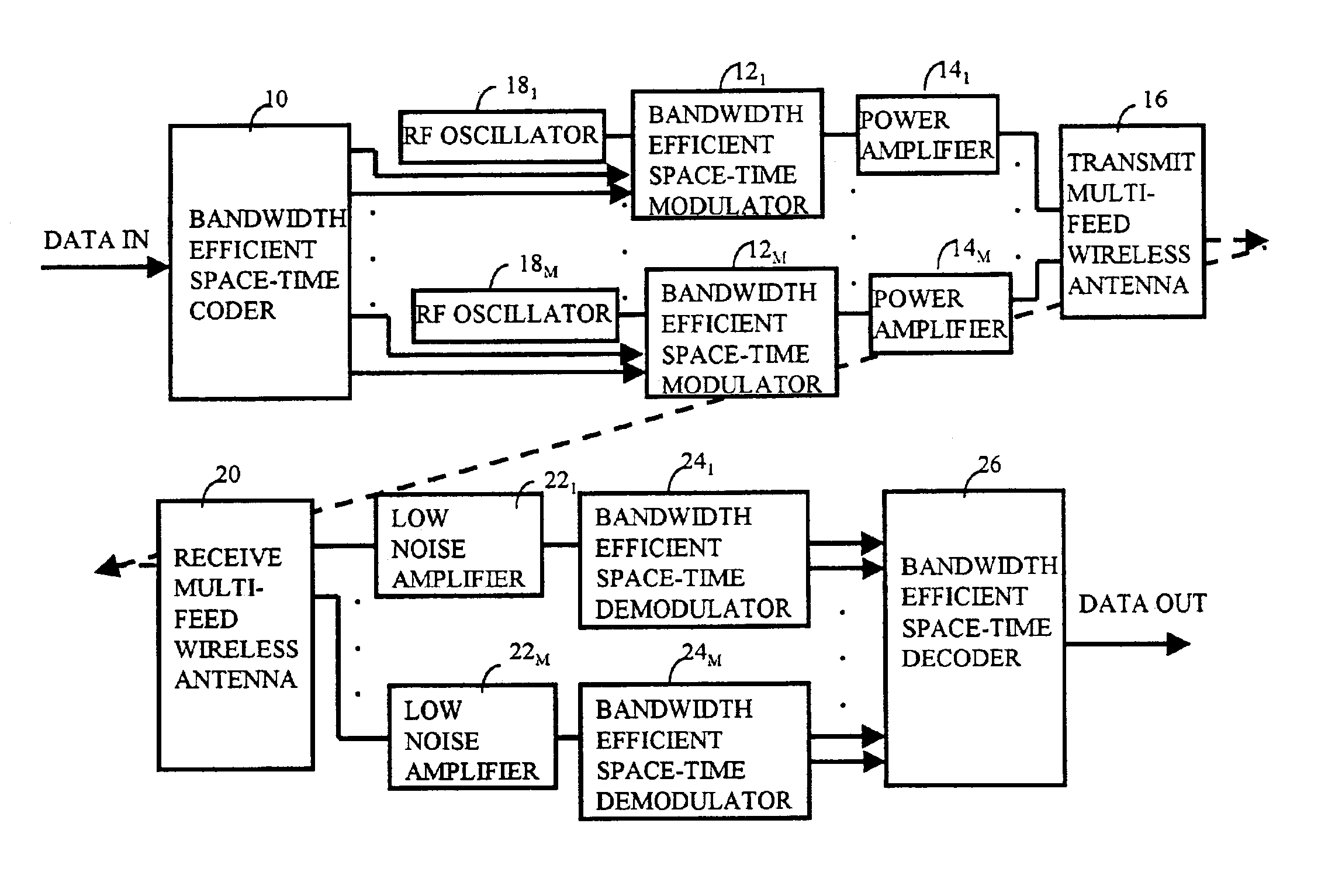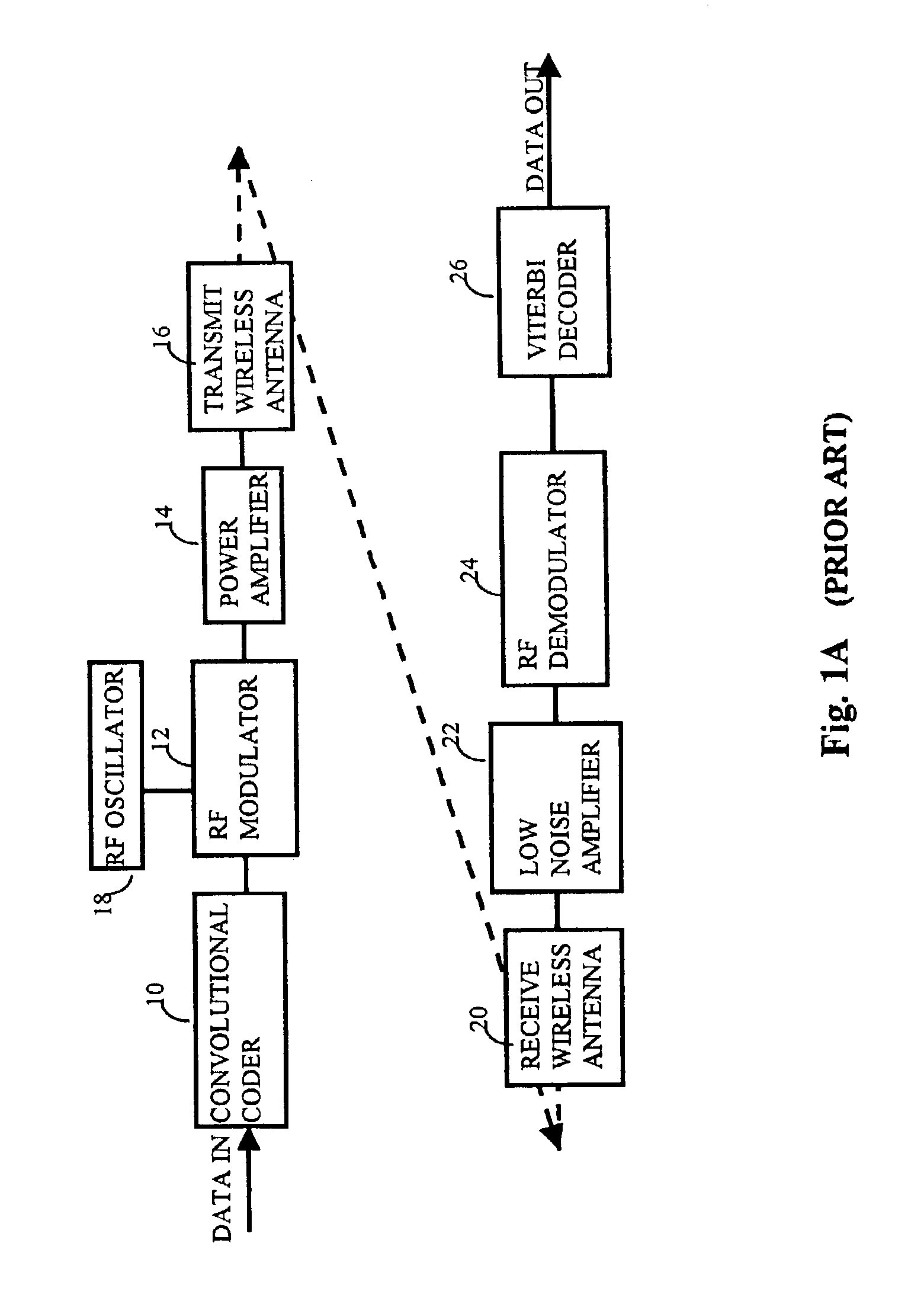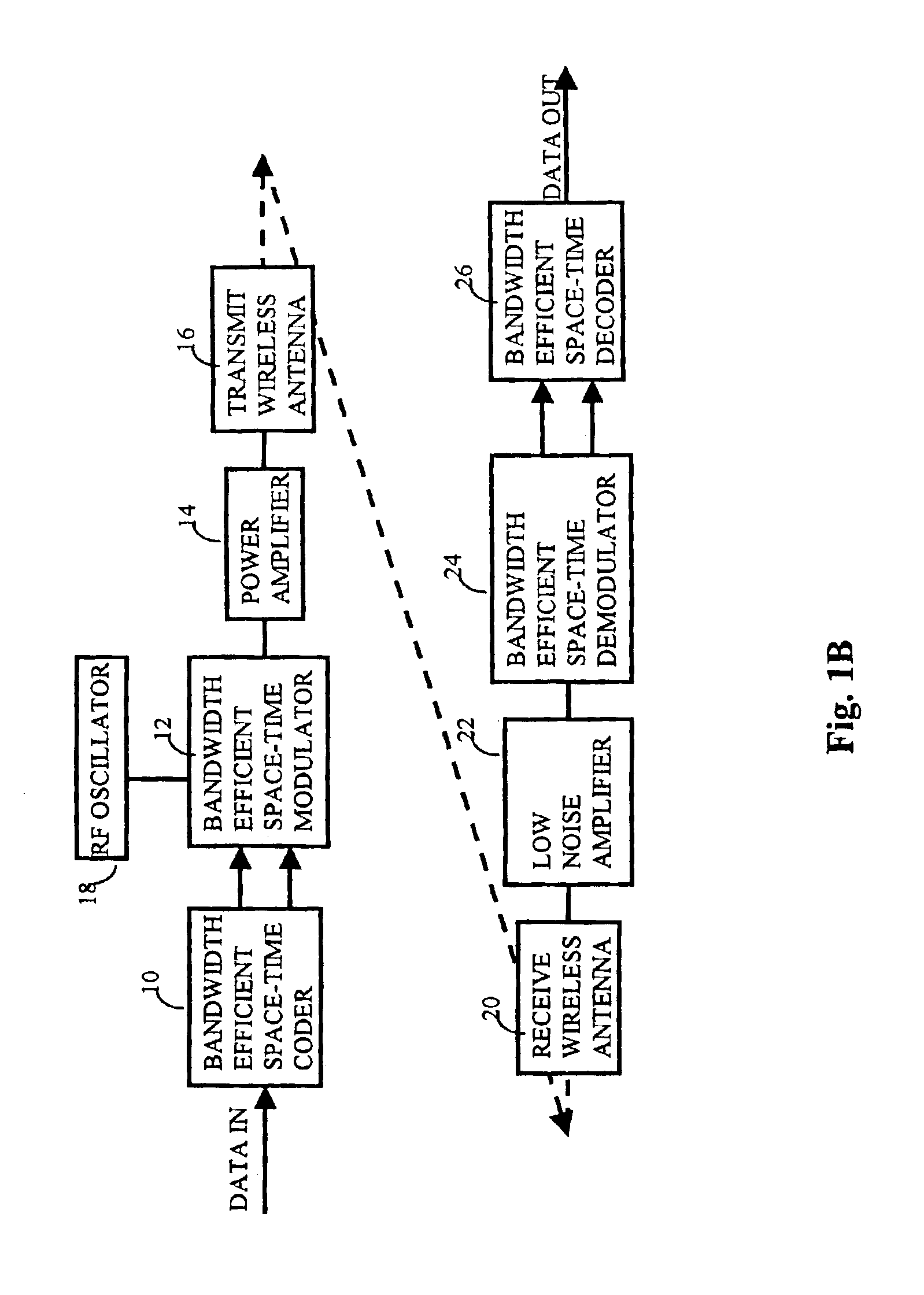System and method for increasing bandwidth efficiency and throughput of a data transmission network
- Summary
- Abstract
- Description
- Claims
- Application Information
AI Technical Summary
Benefits of technology
Problems solved by technology
Method used
Image
Examples
Embodiment Construction
[0093]In accordance with the invention disclosed herein, channel capacity and data throughput of wireless, free-space optical, and fiber-optical communication links can be dramatically increased depending on the order of space-time modulation, transmission waveform, space-time error correction code, the number of spatial and temporal modes, as well as the size of the transmit and receive antenna array. For a typical wireless system generating a temporally coded and temporally modulated signal followed by a single-feed antenna transmitting to a single-feed antenna receiving system, the wireless link capacity, throughput and bit error rate performance is limited by the efficiency of the temporal modulation and effectiveness of the error correction code used. The present invention significantly increases the system throughput and performance of prior art by encoding data with a space-time error correction code, followed by space-time modulation using a bandwidth efficient waveform befo...
PUM
 Login to View More
Login to View More Abstract
Description
Claims
Application Information
 Login to View More
Login to View More - R&D
- Intellectual Property
- Life Sciences
- Materials
- Tech Scout
- Unparalleled Data Quality
- Higher Quality Content
- 60% Fewer Hallucinations
Browse by: Latest US Patents, China's latest patents, Technical Efficacy Thesaurus, Application Domain, Technology Topic, Popular Technical Reports.
© 2025 PatSnap. All rights reserved.Legal|Privacy policy|Modern Slavery Act Transparency Statement|Sitemap|About US| Contact US: help@patsnap.com



